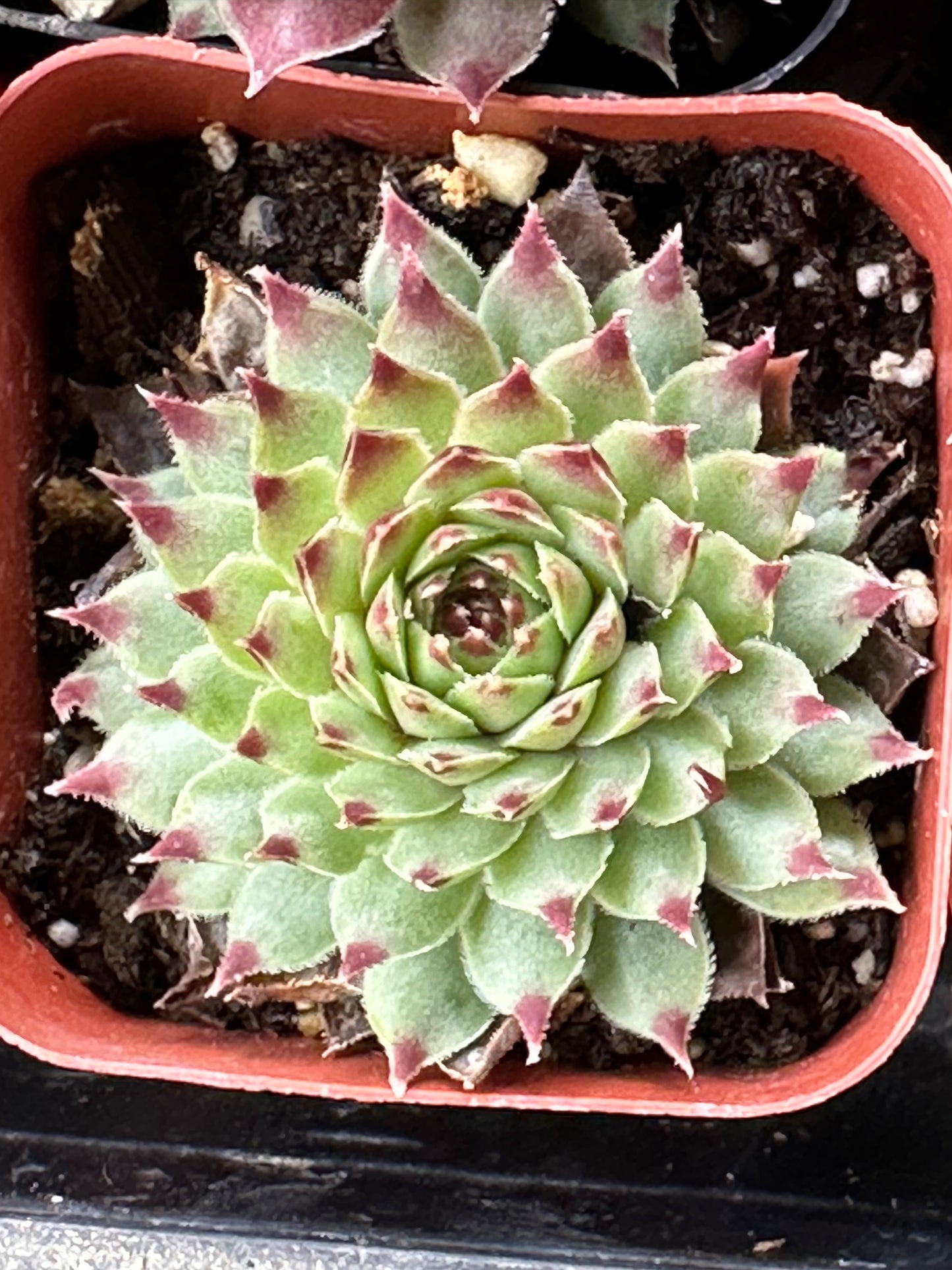1
/
of
1
SEAH
Sempervivum tectorum ssp. calcareum
Sempervivum tectorum ssp. calcareum
Regular price
$2.99 USD
Regular price
$4.99 USD
Sale price
$2.99 USD
Unit price
/
per
Couldn't load pickup availability
Sempervivum tectorum ssp. calcareum, commonly known as the Houseleek or Hen and Chicks, is a hardy and attractive succulent plant. Here is an in-depth look at its morphological characteristics, growth habits, maintenance points, and reproduction methods:
Morphological Characteristics
- Leaves: This subspecies has thick, fleshy leaves that form tight rosettes. The leaves are green with red tips, sometimes taking on a more intense red hue during colder months or under stress conditions. The leaf surfaces are covered with a fine, web-like hair.
- Size: Each rosette can grow up to 10 cm (4 inches) in diameter. The plant stays relatively low to the ground, typically not exceeding 15 cm (6 inches) in height.
- Flowers: It produces star-shaped, pink to red flowers that bloom on tall, erect stalks in early to mid-summer. After flowering, the rosette that produced the flower usually dies.
- Rosettes: The central rosette is surrounded by smaller rosettes, forming a cluster that resembles a hen surrounded by her chicks, hence the common name.
Growth Habits
- Light: Prefers full sun to partial shade. Adequate sunlight is necessary for the plant to maintain its compact rosette form and vibrant coloration.
- Temperature: Extremely cold-hardy, it can survive temperatures well below freezing, making it suitable for outdoor cultivation in many climates.
- Water: Being a drought-tolerant plant, it requires minimal watering. Allow the soil to dry completely between watering sessions to prevent root rot.
Maintenance Points
- Soil: Requires well-draining soil. A mixture of potting soil with sand or other gritty materials is ideal to improve drainage.
- Pot: When grown in containers, ensure the pot has good drainage holes.
- Fertilizer: Generally does not require fertilizer. If desired, a balanced, slow-release fertilizer can be applied at the beginning of the growing season.
- Pruning: Deadheading is not necessary, but removing dead rosettes can help prevent rot and maintain the plant’s appearance.
Reproduction Method
- Offsets: The most common method of propagation is through offsets. The "chicks" can be easily separated from the "hen" when they have formed their own roots and planted elsewhere.
- Leaf cuttings: While not as common, leaves can sometimes be propagated, though success rates are lower compared to offsets.
- Seeds: Sempervivum tectorum ssp. calcareum can also be grown from seeds, though this method is less common. Seeds should be sown in well-draining soil and kept moist until germination.
Sempervivum tectorum ssp. calcareum is celebrated for its resilience and ease of care, making it a popular choice for rock gardens, green roofs, and succulent collections. Its ability to thrive in poor soil and resist drought and frost allows it to be a versatile addition to both indoor and outdoor gardens.
Share

